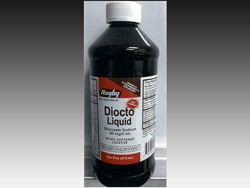
What To Do When Patients Press Record in the Emergency Department
What To Do When Patients Press Record in the Emergency Department
Dear Director: It seems like more and more patients are trying to record me during my encounter with them. Sometimes it’s in the history portion, sometimes they want to record the procedure. I don’t want to end up going viral or get sued. Can I say no?
How many times have you seen friends post a picture of themselves or their family in an ER hospital bed? Technology has changed over the last decade, putting a high quality camera and recorder in everyone’s pocket, while social media has made it “normal” for people to post personal and private matters online. Thus, more of us are being confronted with a camera in our face as we perform our job in the emergency department. I was at a surgeon’s office last week, and there was a big sign at their registration window that said, “Absolutely no pictures or video recording.” I was afraid to even take a picture of the sign for fear that they would kick me out of the office, and I wouldn’t get the care that I need. There is no doubt we need to develop a policy that is in line with modern technology and social behavior.
Background
For decades, hospitals have been dealing with anxious parents as they want to record the birth of their child in labor and delivery. Interestingly, there are actually no national standards for allowing or not allowing recording equipment in the hospital, so each hospital must develop their own policy. And while patients or their families may say it’s their right to record themselves, that’s only true if they’re on their own property. Once they are on hospital property, patients and visitors must comply with hospital rules.
Motivation to Record
While I didn’t do this for my own kids, it does kind of make sense to me that people would want to make recordings in L&D. The motivation there is generally not to capture an error but rather to record a life-changing family event.
However, just like the family member who starts noting your time of arrival into a room and exactly how to spell your name before you even ask why the patient is there, you have to question why someone might want to record parts of their ED encounter. In this case, it’s likely that the family wants to document something because they assume something went wrong or will go wrong, or they’re already unhappy. My hospital rarely gets complaints about our video policy outside of L&D, so if someone wants to record something in the ED, your radar should be up. While a before and after picture of a laceration doesn’t bother me, it would be very bothersome to have a camera in my face while I’m actually doing my procedure. However, there can be some potential advantages of recording. Some physicians are encouraging patients to record the conversation about discharge instructions so that they can re-watch them if there are questions.
What’s There To Be Afraid Of?
The theory goes that if you’re doing everything right and practicing within the standard of care, there’s really no reason to fear a recording. But a camera and a recording can change everything. Although we work in a fishbowl and are used to “performing” at times for patients, most of us aren’t actors and we all should be focused on the patient and not focused on how we look, act, or speak on camera. Most of us come to work to take care of patients, not for the potential to be an Internet star. Probably most of us heard about the case where a patient turned on his phone recorder prior to a colonoscopy (with the intent of hearing discharge instructions), and then the anesthesiologist made insulting remarks about the patient. The procedure took place in 2013, and the malpractice case concluded in 2015. Clearly the doc wasn’t “doing everything right” and wasn’t professional, but the recording cost them in court and made them infamous.
Someone making a recording can also get in the way of caring for a patient. In areas of the hospital where a patient can worsen quickly and without notice (L&D and the ED), all eyes should be on protecting and caring for the patient – not on dealing with someone who may be in the way by making a recording.
Hospitals also have an obligation to protect the privacy of their patients (remember HIPAA?). Someone may be making a recording of their family member but then capture another patient in the process who does not want to be recorded and didn’t give consent. While TV news crews can film the outside of a hospital (with the normal people coming and going) from the sidewalk (considered public grounds), you typically won’t see news cameras inside the hospital without someone from your PR office carefully controlling the image and what’s visible so the rights of patient’s privacy are protected.
Physicians and hospital administrators are also concerned about how video may be used. It’s one thing to show a friend how goofy your teenager is after receiving meds from surgery; it’s another if it could be used for litigation. It’s so easy to edit recordings now that a chopped up sequence of events would not show the entirety of the situation and may not be a fair reflection of what happened. Thus, the recording could lose the true perspective of events.
Putting Aside Distraction
I filmed a commercial for a hospital years ago. I’ve had no acting experience since the sixth grade, but the script was simple, I had a teleprompter, and the director thought the whole thing would take a matter of minutes to film. An hour later, I was embarrassed to still be there (on some takes there were issues of the lights reflecting off my bald head and on other takes, I missed my mark when I was walking in) and ready to get back to the ED, but the director thought he finally had a good take. I never thought acting was easy, but this experience proved it to me. It also serves as a reminder about how as clinicians we need to focus on our jobs while not being distracted. Whether it’s a camera in your face or the perceived threat of a lawsuit, these are distractions that could interfere with patient care.
Next Steps
The hospital has an obligation to protect the facility, staff, physicians, and patients and doesn’t want to compromise any party. As with many administrative questions, the answer may lie in your hospital’s policy book. Get to know your policy on patients making recordings and make sure your policy is consistent with your work environment and concerns. While the policy may prohibit recording in L&D, it may not comment on the rest of the hospital or it may only prohibit it in L&D during the actual birth. If it doesn’t include the ED, now’s the time to work with your public relations department to come up with a set of rules that are applicable to the ED.
I would propose absolutely no recordings and no photographs that include staff or other people/patients in the ED. Unless it’s a big problem, I wouldn’t advocate putting signs at triage or in patient’s rooms. While I’m not likely to tell a patient not to take a selfie in the ED, I will ask them not to do it while I’m at the bedside. If a patient wants to record something it’s always helpful to be able to say that our hospital prohibits the use of recording devices. If you don’t have a policy, or if they argue with you, I suggest politely saying that this conversation is taking attention away from the patient and not helping the patient and that you don’t consent to being recorded. While I would never advocate walking away from a sick patient, if you have the luxury of time, I would step out of the room. If the family is recording because they’re afraid of a mistake or if there’s a grievance, you can have someone from patient relations come talk to them.
When All Else Fails
It may, on rare occasions, be necessary to call security. If someone continues to record in the ED against hospital policy, you have to remove them. While there are clear needs for hospital security when it comes to a violent patient, I think of calling security as a last resort in this situation, as it may further irritate a patient or family member in what is likely a volatile situation. Therefore, prior to calling security, make sure you’re doing it for the right reasons, which may include following policy, protecting your ability to take care of the patients without distraction, or protecting privacy.
Technology isn’t going away, and just like we’re starting to see more police officers with cameras attached to them, there certainly may come a time when we see more recordings of the physician-patient interaction. I can’t remember the last time a patient wanted to record my interaction with them or that someone in my group mentioned it to me, so for now, I still think we’re early in this evolution. Therefore, we can go ahead and work on developing policies with our administration that take into account some of the patients’ desires while protecting the hospital, staff, and other patients.
 No matter the setting, all healthcare professionals “records” what goes on when dealing with a pt… it is called “the pt’s medical record” and unless there is something that proves or refutes what was actually done… then the healthcare professional’s beliefs, opinions, “lies” that are put in the pt’s medical record will be considered “the truth”.
No matter the setting, all healthcare professionals “records” what goes on when dealing with a pt… it is called “the pt’s medical record” and unless there is something that proves or refutes what was actually done… then the healthcare professional’s beliefs, opinions, “lies” that are put in the pt’s medical record will be considered “the truth”.
Without a video/audio recording.. there can be three sides to every story… mine, yours and THE TRUTH. Without a audio/video recording… it will be the healthcare professional’s input in the pt’s medical record that will probably prevail.
Filed under: General Problems | 10 Comments »


















 Express Scripts mail-order pharmacy to limit opioids
Express Scripts mail-order pharmacy to limit opioids


